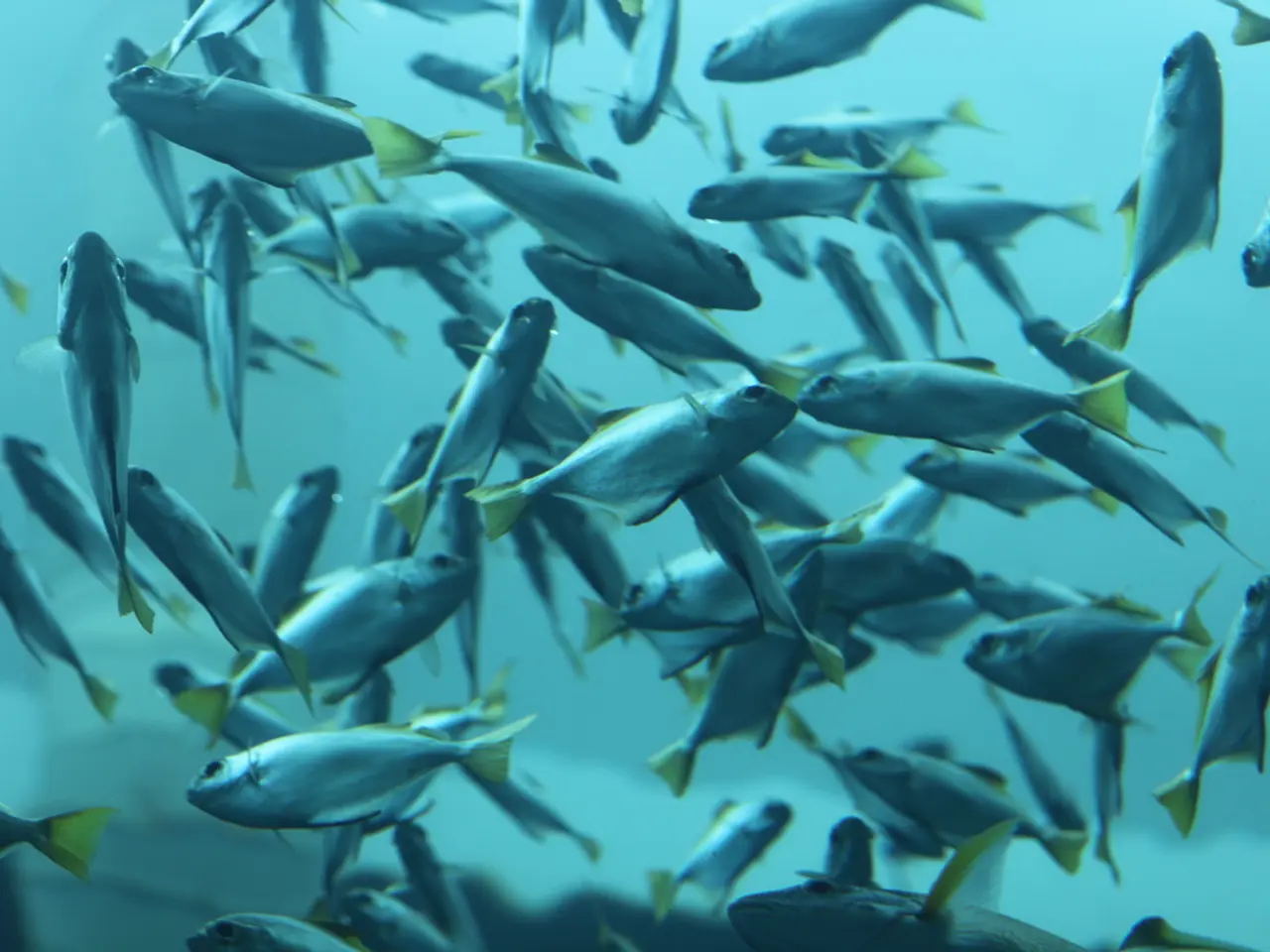Boosting Income, Nutrition, and Sustainability through Carp Farming: An Aquaculture Guide
======================================================================================
Common carp farming offers a simple, sustainable, and profitable model for farmers across India. Here's a step-by-step guide to successful common carp fish farming.
Broodstock Selection
Choosing healthy, disease-free, and genetically superior broodstock is crucial for quality spawn and fry. Some farms maintain dedicated hatcheries to preserve genetic purity and reduce disease risk.
Breeding
Natural breeding occurs in specially prepared ponds with good water quality and appropriate spawning substrates. Induced breeding can be done through hormone injections to synchronize spawning, followed by fertilization in hatchery trays or hapa nets, ensuring higher hatch rates and control over spawn timing.
Nursery and Fry Rearing
After hatching, carp spawn are reared in nursery ponds or hapas where they are provided with suitable feed and maintained under controlled conditions. Feeding management and water quality are critical during this stage to promote healthy fry growth.
Pond Preparation
Before stocking fry or fingerlings, ponds require preparation including liming to stabilize pH (ideal 6.5–8.5), drying, removing predators, and applying organic or inorganic fertilizers to boost natural food organisms. Regular monitoring of parameters like dissolved oxygen (>5 ppm) and temperature (25–32°C) is essential for optimal fish growth.
Grow-out
Fingerlings are stocked at recommended densities (around 1,000–1,500 common carp per acre in monoculture). Feeding is managed according to growth stages, and water quality is periodically tested. Aerators may be used during summer to maintain oxygen levels. Regular pond maintenance and disease monitoring, including preventive measures such as disinfection and vaccinations (if available), help maintain high survival rates.
Harvest
Common carp may be harvested after 6–10 months when they reach market size. Harvesting can be done by draining ponds or using nets. Post-harvest handling ensures fish quality for market.
With proper pond management, timely feeding, and the right broodstock, farmers can produce high-quality fish with good market value. Common carp reaches a size of 2.5 to 3.5 kg within 10 to 14 months, and the ideal market size is between 1.2 to 1.8 kg. Common carp farming can provide a dependable return for home consumption or sale.
Fingerlings are reared in larger ponds for 2 to 3 months, reaching 100-150 mm in size. The stocking density is around 1 lakh per hectare. Pond preparation involves draining, drying, ploughing, lime application, fertilization, removal of aquatic weeds, and removal of predatory fish.
- To ensure the optimal growth and health of common carp in larger ponds, it's essential to maintain a balanced diet that includes proper nutrition for the fingerlings, particularly during the crucial rearing stage.
- Investing in science and research within health-and-wellness can lead to advances in nutrition for carp, potentially increasing their growth rates and market value in farming.




